When you think of wrestling, images of fighters grappling on mats or in a ring may come to mind. But wrestling is far more than just a sport; it’s one of humanity’s oldest and most enduring physical contests. From ancient cave paintings to modern-day arenas, wrestling has captivated cultures worldwide, evolving from survival tactics to a respected sport celebrated globally.
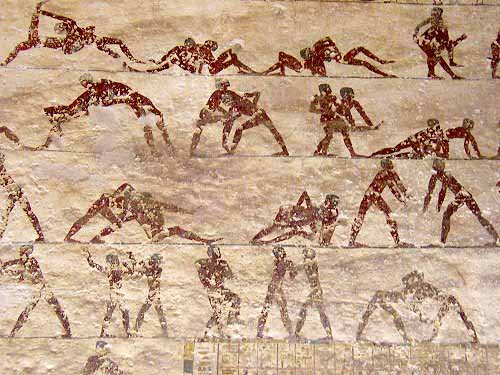
Ancient Origins: Wrestling in Prehistoric Times
The history of wrestling dates back thousands of years, with its origins rooted in survival, competition, and ritual. In ancient cave paintings in France, dating back nearly 15,000 years, we see some of the earliest depictions of wrestlers engaged in combat. Wrestling, it seems, began as a primal form of testing strength, skill, and endurance.
As civilisations formed, wrestling became more than just a fight for survival; it turned into an organised sport. Ancient Mesopotamia and Egypt give us some of the earliest documented wrestling scenes, such as the famous images from tombs in Beni Hasan, Egypt, which show athletes practising various techniques and holds. These images reveal that wrestling was not only widespread but highly organised and technical, demonstrating an understanding of balance, leverage, and physical control that would become central to the sport.
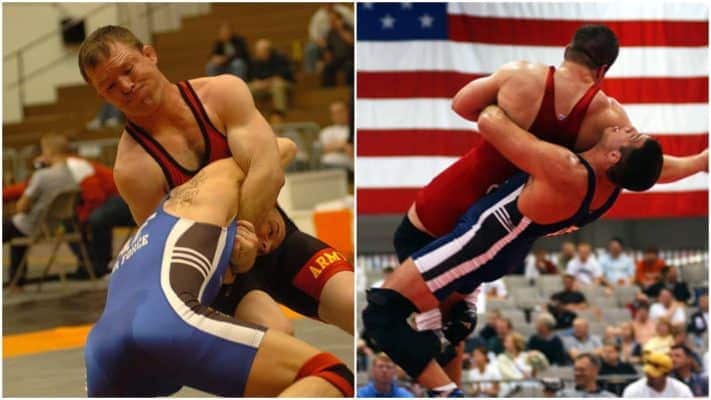
The Essence of Wrestling: A Modern Sport Defined
Wrestling, in its simplest form, is a grappling sport where two opponents attempt to gain control over one another through a series of moves, holds, and takedowns. Unlike other combat sports, wrestling doesn’t typically involve striking (punching or kicking). Instead, it’s a battle of strength, balance, agility, and strategy, requiring athletes to use their bodies to gain positional dominance over their opponent.
Today, wrestling is practised in two main styles in international competitions: freestyle and Greco-Roman.
- Freestyle Wrestling: In freestyle wrestling, competitors can use both their upper and lower bodies to execute holds, trips, and throws on any part of the opponent’s body. Points are awarded for effective takedowns, escapes, and near-fall situations. This style is fast-paced, encouraging dynamic movements and a wide range of techniques, including leg holds.
- Greco-Roman Wrestling: In Greco-Roman wrestling, holds below the waist are prohibited, focusing the action on upper-body techniques. This rule change creates a sport where powerful throws and chest-to-chest grappling are emphasised. Greco-Roman wrestlers aim to lift, control, and throw their opponent while remaining within the limitations of upper-body engagement.
Objectives and Scoring in Wrestling
The goal in wrestling is to either pin your opponent or accumulate more points than them by the end of the match. A pin occurs when a wrestler holds both of their opponent’s shoulders on the mat for a few seconds, resulting in an immediate win.
If no pin is achieved, points determine the winner. Points are awarded based on specific manoeuvres and the control displayed. Scoring includes:
- Takedowns (bringing an opponent to the mat and gaining control),
- Reversals (changing from a defensive to an offensive position),
- Exposures (forcing the opponent’s back to face the mat without pinning), and
- Escapes (breaking free from an opponent’s hold).
Each technique varies in point value depending on its difficulty and effectiveness. Matches are usually divided into two or three rounds, and the wrestler with the highest total score wins if no pin occurs.
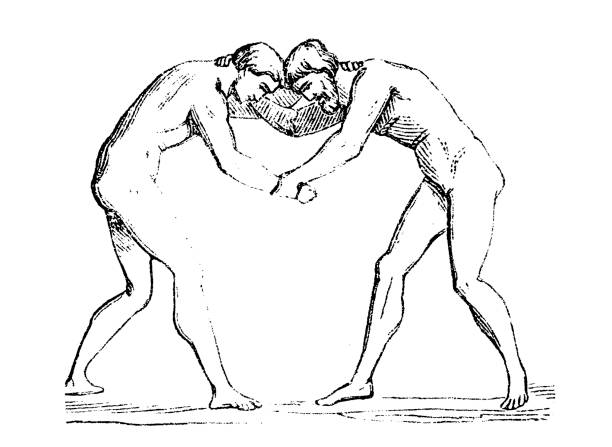
Greece and the Olympic Tradition
In ancient Greece, wrestling achieved a revered status, woven into the fabric of the Olympic Games around 708 BCE. Known as “pale,” Greek wrestling was one of the five primary Olympic sports and served as the final and deciding event in the pentathlon. The Greeks treated wrestling as the ultimate test of athletic prowess, requiring skill, agility, and strength.
Greek wrestling was distinct: it prohibited certain holds like leg locks, but allowed a variety of techniques we’d recognise today. Wrestlers aimed to throw or pin their opponents to the ground three times to win, emphasising control and technical skill over brute force. Famous Greek athletes, like Milo of Croton, became legends in their time, celebrated not just for victories but for embodying the ideal of physical excellence. Milo, known for his incredible strength and training regimen, remains one of wrestling’s earliest heroes.
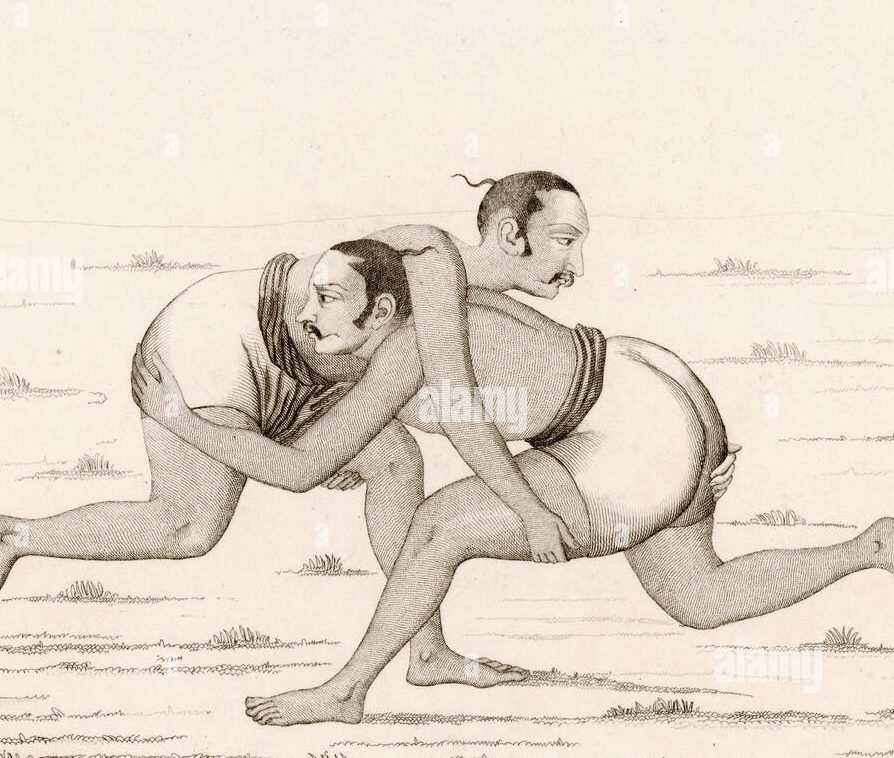
The Spread of Wrestling Across Cultures
While Greece made wrestling a celebrated sport, other cultures developed their own unique forms. In India, Kushti, or Pehlwani, emerged as a disciplined, ritualistic wrestling style that combined spirituality with physical training. Indian wrestlers, known as “pehlwans,” trained rigorously, often in mud pits, as they sought physical and mental mastery over themselves and their opponents.
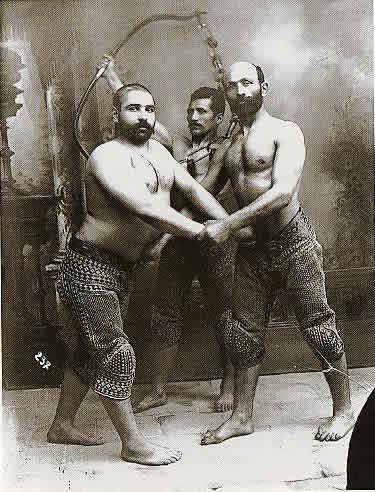
In Persia (modern-day Iran), Varzesh-e Bastani took wrestling into the realm of spiritual and physical refinement. This ancient discipline combined martial arts with strength training and was practised in dedicated spaces called “zurkhaneh,” or houses of strength. Wrestling became not just about winning but about becoming the best version of oneself—a concept that still resonates with many wrestlers today.

China and Japan also have long-standing wrestling traditions. Shuai Jiao, the oldest known form of wrestling in China, dates back more than 4,000 years and emphasises throws and leverage. In Japan, sumo wrestling evolved into a highly ritualistic sport practised by sumo wrestlers, who embody centuries-old traditions and rituals unique to Japanese culture.
Wrestling in Medieval Europe
Throughout the Middle Ages, wrestling remained a popular sport across Europe. It was widely practised at festivals and tournaments, with different regions adopting their own techniques and styles. Wrestling was considered both a public spectacle and a form of military training, as it taught soldiers valuable grappling skills. Nobles and kings were often trained in wrestling, with some, like Henry VIII of England, participating in matches themselves.

During the Renaissance, wrestling began to take on a more structured form. Manuals like those of German fencing master Hans Talhoffer included detailed illustrations and descriptions of grappling techniques, emphasising wrestling as an art of control and technical mastery. By the 18th century, wrestling’s popularity continued to grow, eventually leading to more formalised competitions.
Wrestling in the Modern Era: From Amateur to Professional
The 19th century saw wrestling evolve into two main styles that still exist today: Greco-Roman and freestyle. Greco-Roman wrestling was formalised in France, emphasising upper-body techniques and forbidding holds below the waist, making it a technical sport focused on throws and positioning. Freestyle wrestling, which developed in the United States and Britain, allowed for holds on any part of the body, creating a faster-paced, dynamic sport.
Wrestling officially entered the modern Olympic Games in 1896 with Greco-Roman wrestling, while freestyle wrestling was introduced in 1904. These forms of amateur wrestling became internationally recognised, with governing bodies establishing rules, weight classes, and safety standards.
Around the same time, professional wrestling, often called “catch wrestling,” began gaining popularity. This was a mix of wrestling techniques and showmanship, with matches held in circuses and local theatres. It eventually gave rise to the professional wrestling entertainment we see today, marked by the larger-than-life characters and scripted drama of organisations like WWE.
Iconic Figures in Wrestling History
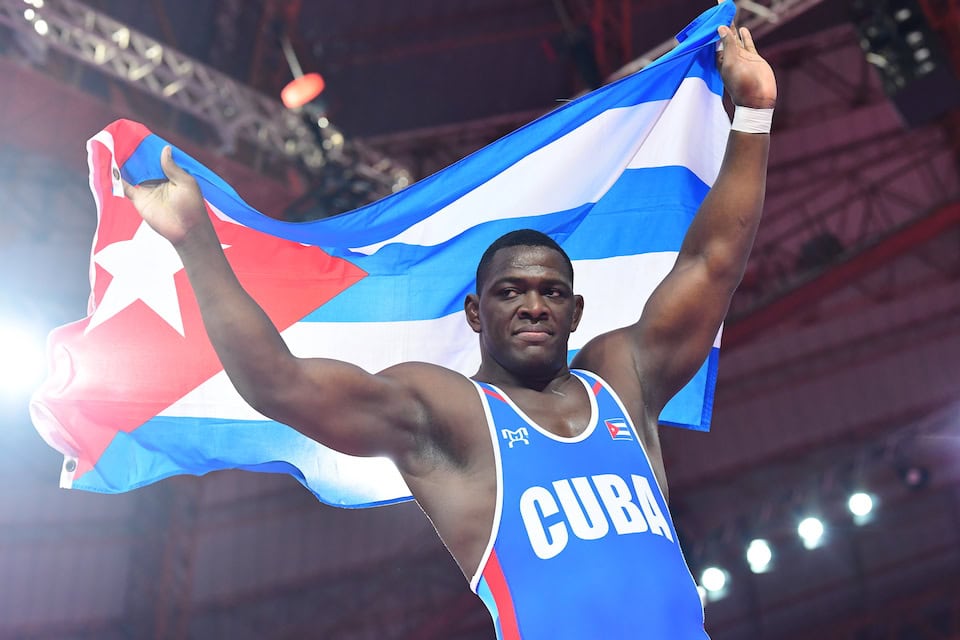
Several key figures stand out in wrestling history, each contributing to the sport’s legacy:
- Mijaín López (Cuba): López achieved a historic fifth Olympic gold medal in 2024, competing in Greco-Roman wrestling in the super-heavyweight division. This record-breaking accomplishment makes him the most decorated wrestler in Olympic history in a single event. Known for his strength, endurance, and skill, López remains an inspiration to wrestlers worldwide and is widely regarded as one of the greatest Greco-Roman wrestlers of all time.
- The Great Gama (India): Known as the undefeated champion, Ghulam Muhammad, or “The Great Gama,” was a force in the early 20th century, famously undefeated in his lifetime. His intense training regimen included wrestling hundreds of squats daily and lifting massive stones, inspiring wrestlers worldwide.
- Frank Gotch (United States): A champion of catch wrestling, Gotch became America’s first major wrestling star. His match against George Hackenschmidt in 1908 helped popularise wrestling in the United States and introduced many to the sport.
- Alexander Karelin (Russia): Dominant in Greco-Roman wrestling, Karelin earned the nickname “The Russian Bear” for his strength and unmatched skill. He went unbeaten for over 13 years and remains a symbol of resilience and dedication in the wrestling world.
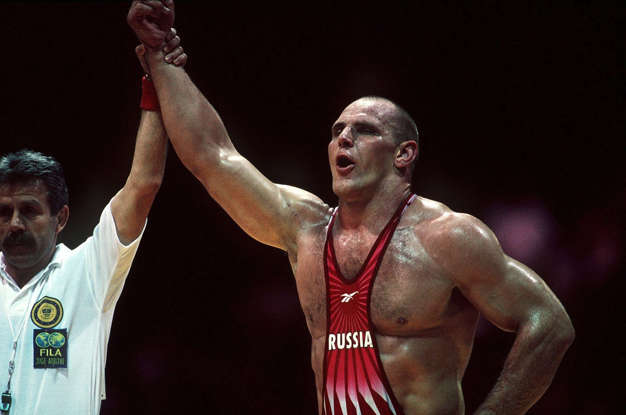
Wrestling’s Enduring Appeal and Legacy
Whether through Olympic wrestling or professional leagues, wrestling continues to captivate audiences worldwide. With deep roots in ancient civilisations and a structured framework today, wrestling celebrates the purest form of human competition—one based on skill, willpower, and the drive to dominate one’s opponent. Its history and modern-day rigour make it a sport that challenges both body and mind, embodying the spirit of resilience and mastery.
